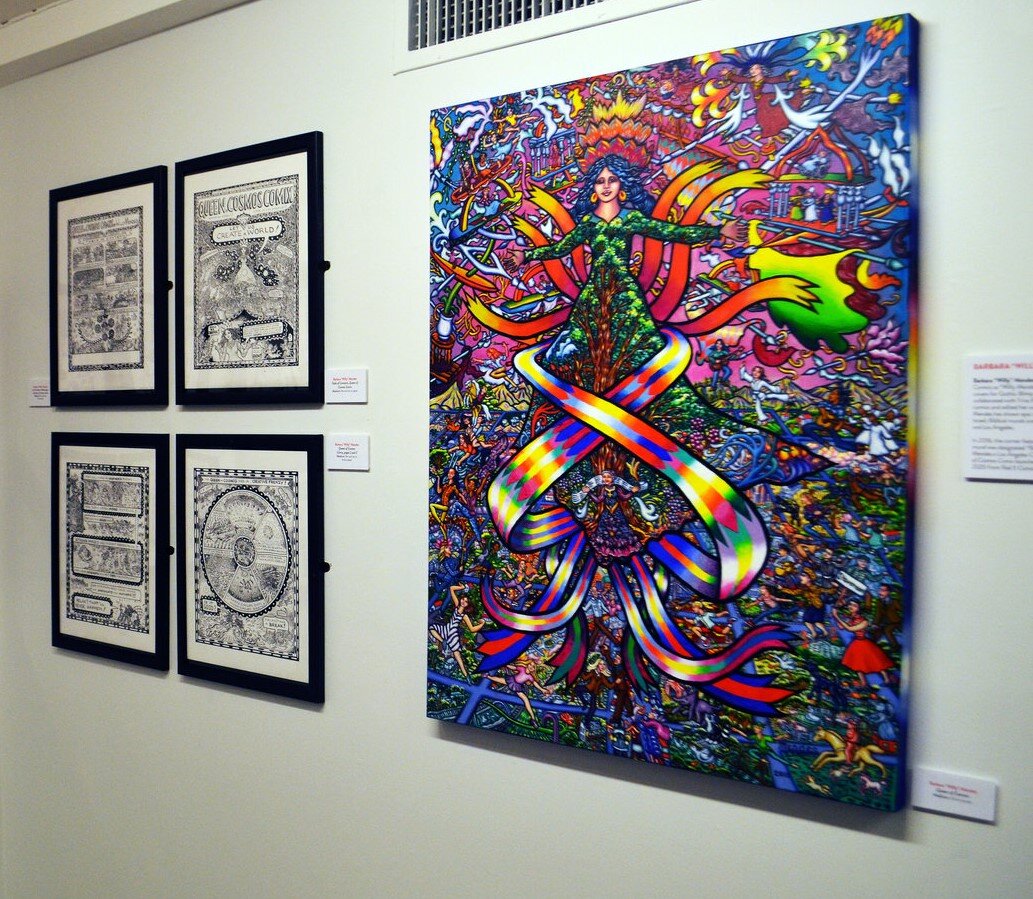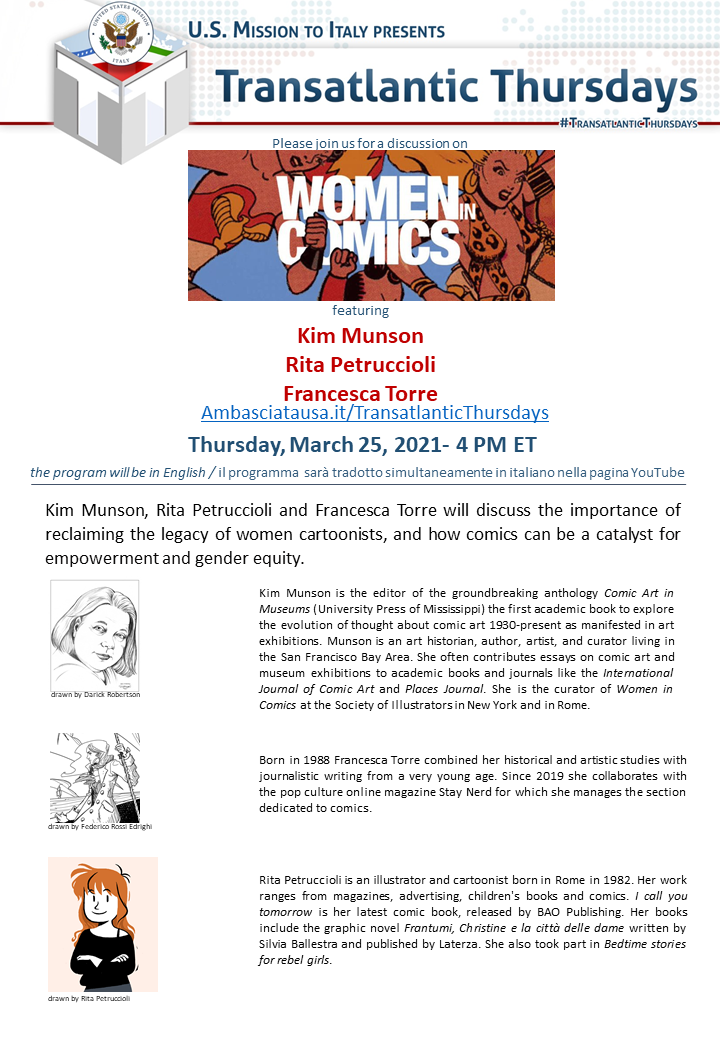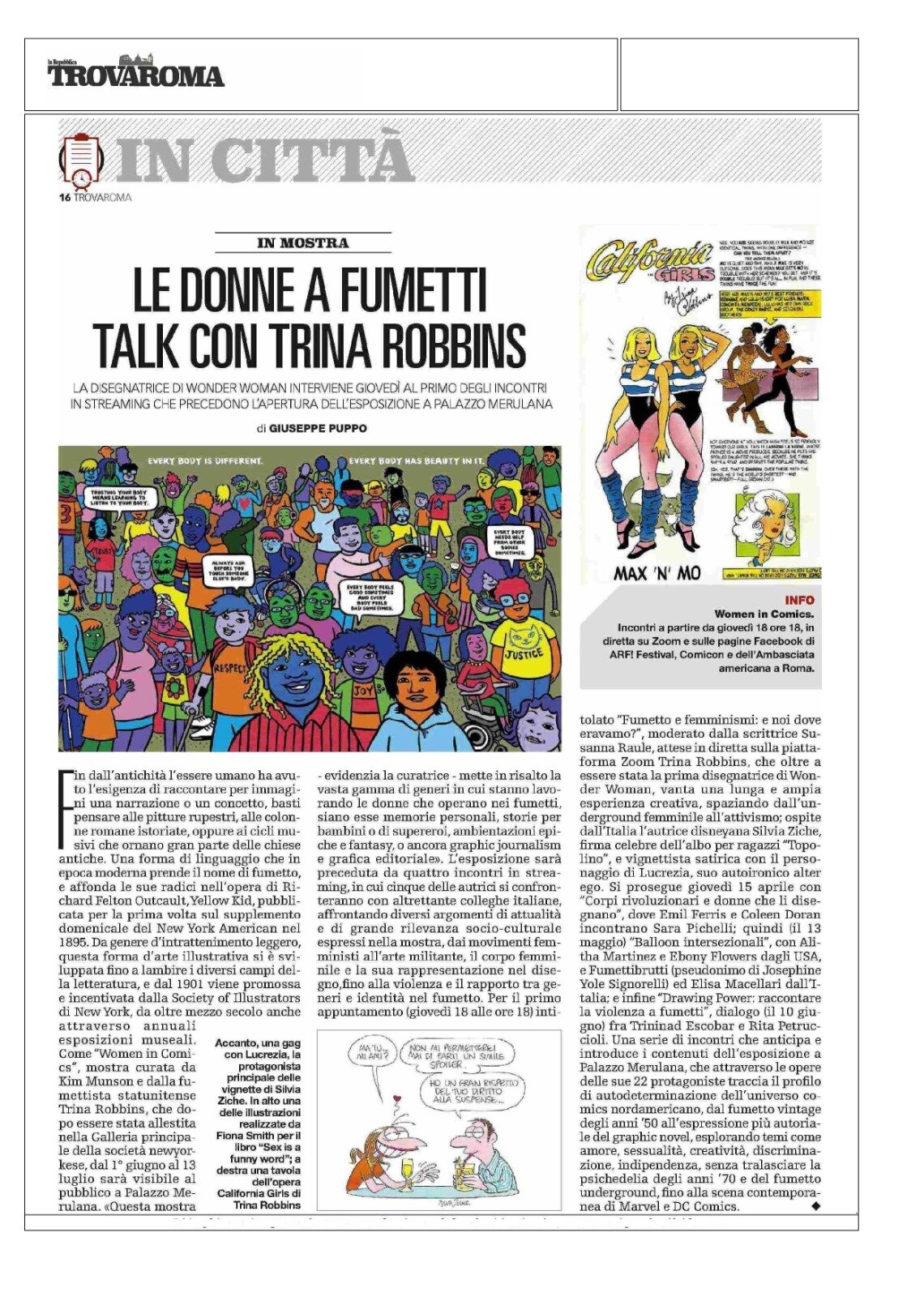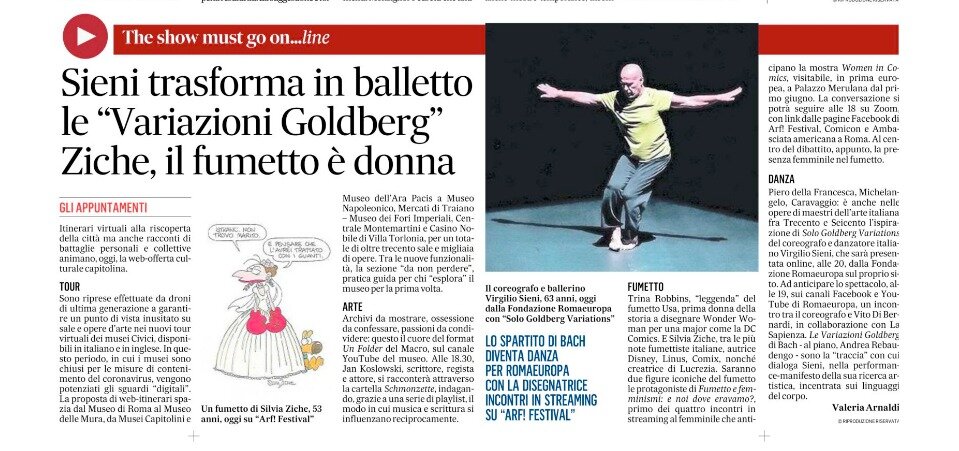You also have to be careful when you exhibit comics, because there's an issue of scale. A lot of museum galleries are set up for those big abstract expressionist paintings and larger artwork, so something like black and white 11 x 14 drawings can get really lost if you're not careful. I mean, this is the same thing you have to consider if you're doing an exhibit of Renaissance drawing. They're not jumping off the wall at you like a big painting would be. So, you have to think about the space that you're displaying the work in. These issues of scale and narrative are really important to think about.
NWN: But it also leads to a lot of innovation as well, in the way that exhibits are shown. That's one of the things I found interesting in a lot of the essays were the way people, different people tackled those issues, and led to a lot of innovation.
KM: There's one essay I included by a scholar named Damian Duffy, who writes about comics exhibits and new media. That's important because more and more exhibitions are incorporating an iPad or something, so that you can see the artwork in various processes. Sometimes they show the finished book or give more background about it. Some shows, like the Gallery Comics shows Paul Gravett writes about, experiment with self-guided narrative. There's also the idea Art Spiegelman mentioned to me while talking about Masters a while ago, where he was talking about the original concept that they had for the show. It was kind of a wheel and spoke idea where they would have a cartoonist who was a real innovator and then radiating from them would be the artists they influenced. And you could pick one of those people and get a fresh set of connected artists. It was too big of a show for them to do in those museums. But that would be a great multimedia show. One thing I've heard from artists over and over while working on this book is how influential it is to see other artist's work in museums. For many artists, they'll admire somebody, and then see their real drawing and it's a real eye opener for them. So, I think the multimedia option is really important, especially since a lot of the work by older artists belongs to archives that may not want to loan the original drawings out.
NWN: Right. In the Joe Wos interview, I was particularly struck by his sense that cartoon art museums are not viable. And also, Brian Walker's discussion of the same problems with the Museum of Cartoon Art. That was a great history of his father's idea for the museum and how it worked. I loved reading that. And we've both been to MOCCA and to the Cartoon Art Museum in San Francisco. So, what do you think about Joe's idea that cartoon art museums are just not viable?
KM: Speaking of Joe, this kind of goes back to the broccoli and cheese idea. I do think that museums that are specifically geared to comic art struggle, because there are some people that are just not into it enough to buy on-going memberships. The Cartoon Art Museum here in San Francisco is finally finding its legs after moving across town, because their members have been participating more and they've figured out how to persuade the tourists to pay to see their exhibits. But they had a real struggle for a long time and it's still a challenge. I think that the larger museums think very hard about how they are going to make themselves attractive to members and tourists. I've been watching the development of the Lucas Museum in LA with great interest because they're kind of doing a real elaborate version of the broccoli and cheese thing where they're luring people in with Star Wars. They're doing this really space-age building and, in the lobby, they're going to have some very Instagrammable things like a giant Death Star prop that everybody's going to line up to take their picture with. Then they hope once people are in the building they will explore the other galleries with storyboards, narrative art like Norman Rockwell, and comic art like R. Crumbs's Genesis. For most museums that are focused on comics or narrative art, the biggest challenge is figuring out how to get people in the door. And once people start looking, then it's like, "oh, yeah, I loved those cartoons." A lot of the foundations that give fine art grants still have that old high and low perception too, you know, they would rather fund another Lichtenstein show than one about the artists whose work he appropriated.
NWN: Well, speaking of high and low, do you think that will ever be resolved? Or is it inherent in the nature of the medium to have that dichotomy with cartoon art as low and fine art high?
KM: At this point, there are a lot more exhibitions, especially now that graphic novels have branched out all over and there are all kinds of people doing incredible biographies and histories. People are so visually oriented now that comics are really the perfect medium for storytelling. I think that it's really become a non-issue in a lot of places. But in museums you are depending on where the curators were educated and what kind of work they're interested in. Someone that's a specialist in abstract expressionist art or contemporary conceptual art is rarely going to want to invest their time and money into a show of comics. So, it depends on the goals the institution and the curators want to emphasize. I think it's come a long way though. Comics get a lot more respect.
NWN: Yes, definitely. throughout the book, everyone, all the essayists, speak to the art of comics, and refer to the narrative, but there's no real discussion of the collaborative nature of comics, especially if a particular artist is working from a script or with a writer. And, as you know, this is of interest to me, because of my particular area. And to me, the very nature of comics is the narrative, and the writer can be just as important to the process. And I'm really learning about the early printing process in the 30s. And how that contributed to the collaborative aspect. And why do you think that's left out of the equation and most of the essays?
KM: Well, there are two or three things going on there. First, art exhibits are about art. Good drawing and good painting. If there's anyone inconsistently credited in exhibits of comic book art that deserves credit, it's probably inkers. Pencillers get the lion's share of the credit as the art is usually their vision, but it's often the inker that really tightened up their work, and there are colorists and letterers too. In terms of writers, most shows mention them on the wall panels and often include a reading area or something where you can see and read the final version. It's kind of a weird conflict because writers overall still get most of the credit for almost everything involved with comics. I've watched my husband, an IP attorney who represents artists, negotiating these kinds of deals. Traditionally, it's rare that artists get equal treatment with writers and actually get credit for anything. I'm glad to say that I see some improvement in that situation. Speaking of the printing process, many older comics books and strips were so badly printed that seeing the actual drawings is a real revelation. For example, Jack Kirby’s collages looked kind of mushy printed on cheap paper in the comics but when you see the originals they have vibrant color and intricate detail. Curators usually try to provide some version of the finished thing, on an iPad, in a reading area, using projections, or an additional framed page.





























































